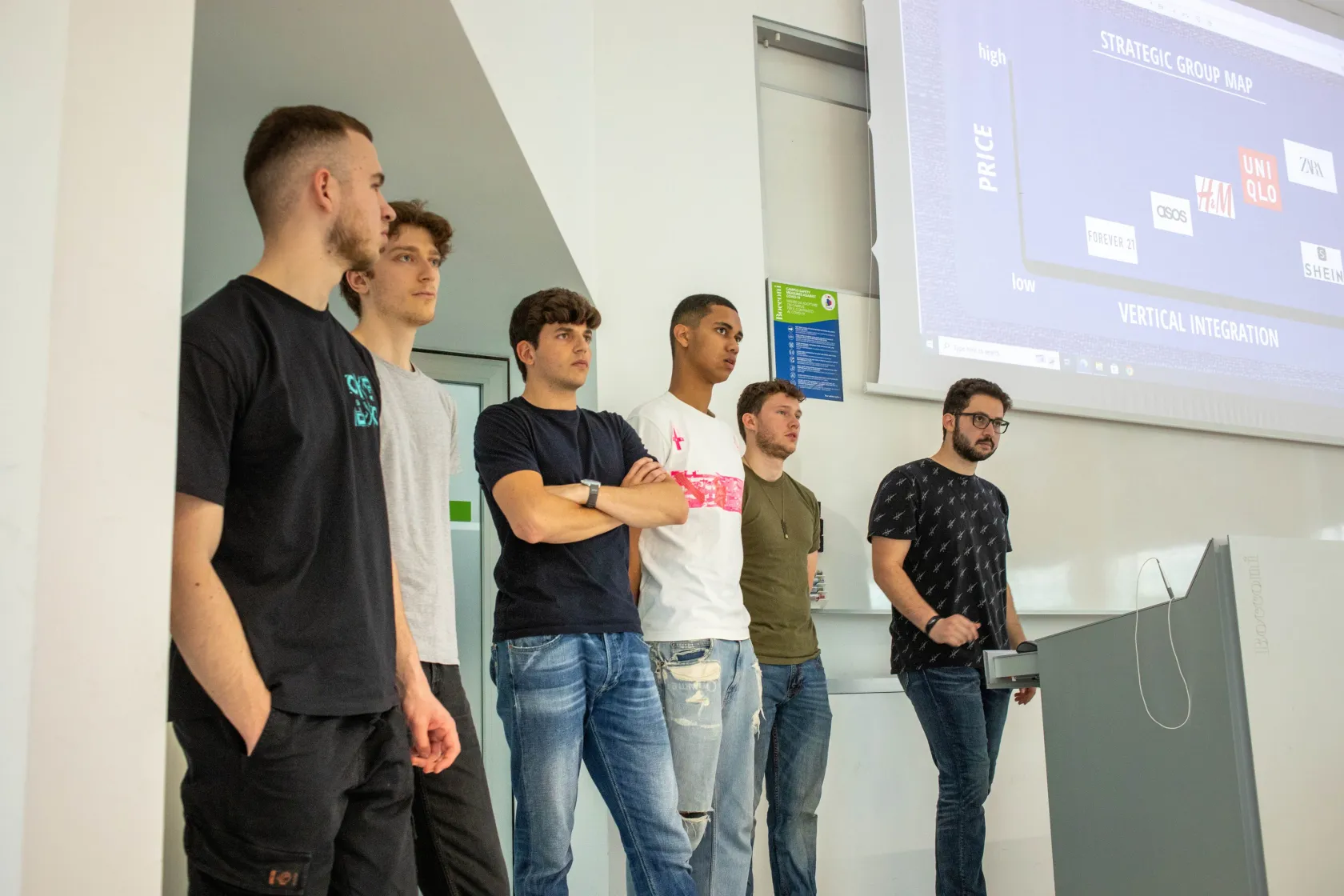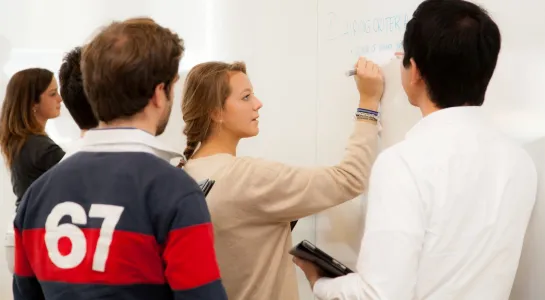
Challenges and Competitions: A Very Serious Game
One of the most effective methods to render teaching more interactive and shorten the distance between what is taught in the classroom and the workforce is Challenge-Based Learning. This approach urges students – whether individually or divided into teams – to solve a challenge based on actual data and problems. Various disciplines offer this kind of experience, but in management teachings they take a more well-structured form, evolving into real competitions. One of the most extensive implementations underway is in the Economics and Management of Public Administration course, led by Professor Francesco Longo, which involves eight CLEAM classes and nearly 1,000 students divided into about 100 teams. “Every year we propose a new exercise from a real dataset,” explains Longo. “The edition that just ended, for example, focused on Italian municipalities' plan to allocate NRRP funds. We made data available from dozens of municipalities; each group chose one and worked on the analysis of the local area's problems and the administration’s investment priorities to come up with a final assessment on the work and make counterproposals.” In the first stage, the groups debate in the classroom and the winning team gets voted by the same students. They then compete among the classes, and a final jury consisting of professional and public authority figures evaluates the finalists’ work to name the overall winner, with an all-female team taking the prize. The evaluation is also innovative. In fact, a third of the course’s final grade is the result of a written test; a third is related to the work in the competition cases; and a third is assigned following an oral exam. “It is a slightly obsolete exam that scares many students, but we want to keep it because we believe that even exams represent learning opportunities,” underlines the professor. “However, the aspect that excites students the most is the fact that they are working on real data and today's issues, discovering that – in order to make decisions – it is not enough to be competent; one must also call in values and principles that are not always shared. Experiences like this also give an idea to young people of how far the political narrative in newspapers or on TV is from the real issues, and I consider this an even more valuable lesson because it improves them as citizens, well before improving them as working professionals.”
The dynamics of the competition are also found in the Business Strategy course, within which students compete in a Business Game to lead their own virtual company in the US electric vehicle market landscape. “Business Strategy is a required course for Bachelor degree programs, so students believe it to be a difficult subject,” comments Professor Nicola Misani, one of the business game writers. “The actual objective of the lessons is to involve students in decision-making processes because that is what a strategist does. To render this challenge even more exciting, we – together with the university’s Department of Management & Technology – developed a web-based simulation with actual data consisting of automatic mechanisms, as well as elements of uncertainty and unpredictability. We then structured it as a video game with a ranking list, final score and, naturally, a winner.” The area of application is the electric car market. Each team aims to design and bring an electric car to market by developing a multi-year strategy that takes into account everything from design constraints and changing demand, to resource allocation and brand positioning in the market. The simulation is spread over a period of eight years, each corresponding to five real minutes. At the end of the virtual year, every team receives a comprehensive report detailing their company's performance and a simplified operating budget. The simulation platform synchronizes the teams’ choices by bringing to life competitive dynamics in real time, and at the end of the “game” the team with the best operating income wins. “In our case the competition is not a binding part of the exam’s final grade,” concludes the professor. “Rather, it is a learning tool that we currently use in the final phase of the course. In the future, though, we may consider extending it to the course’s entire duration, perhaps in the beginning when students are less prepared and more instinctive, giving them time to correct themselves based on the concepts explained in the classroom.”
